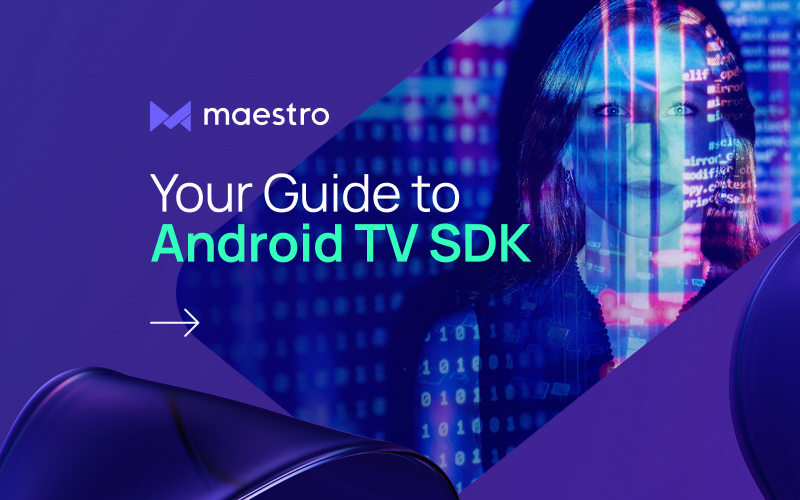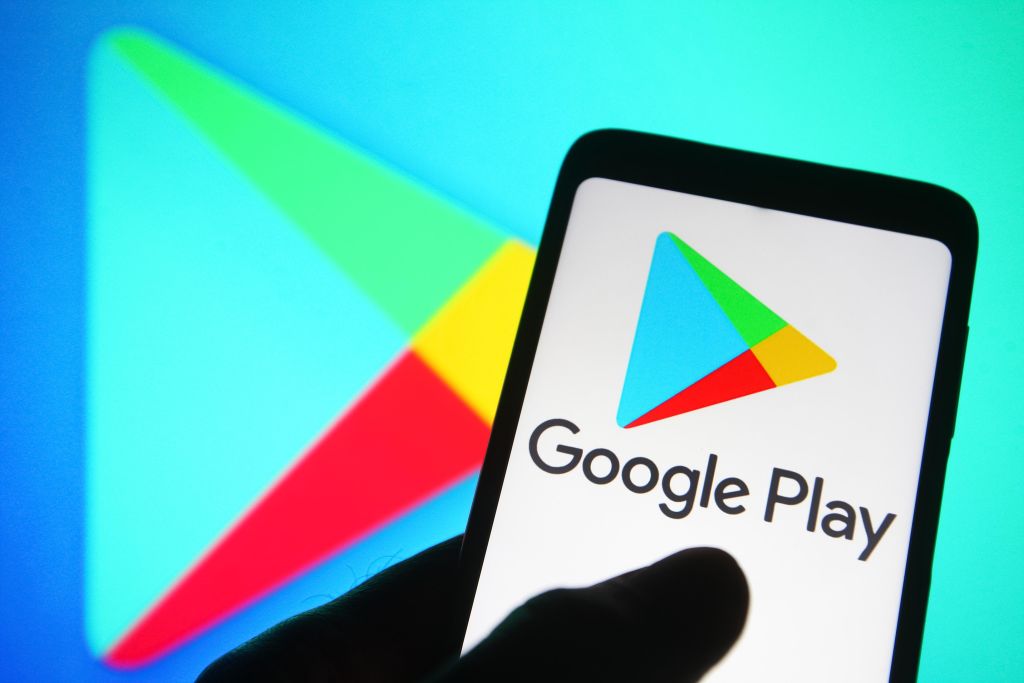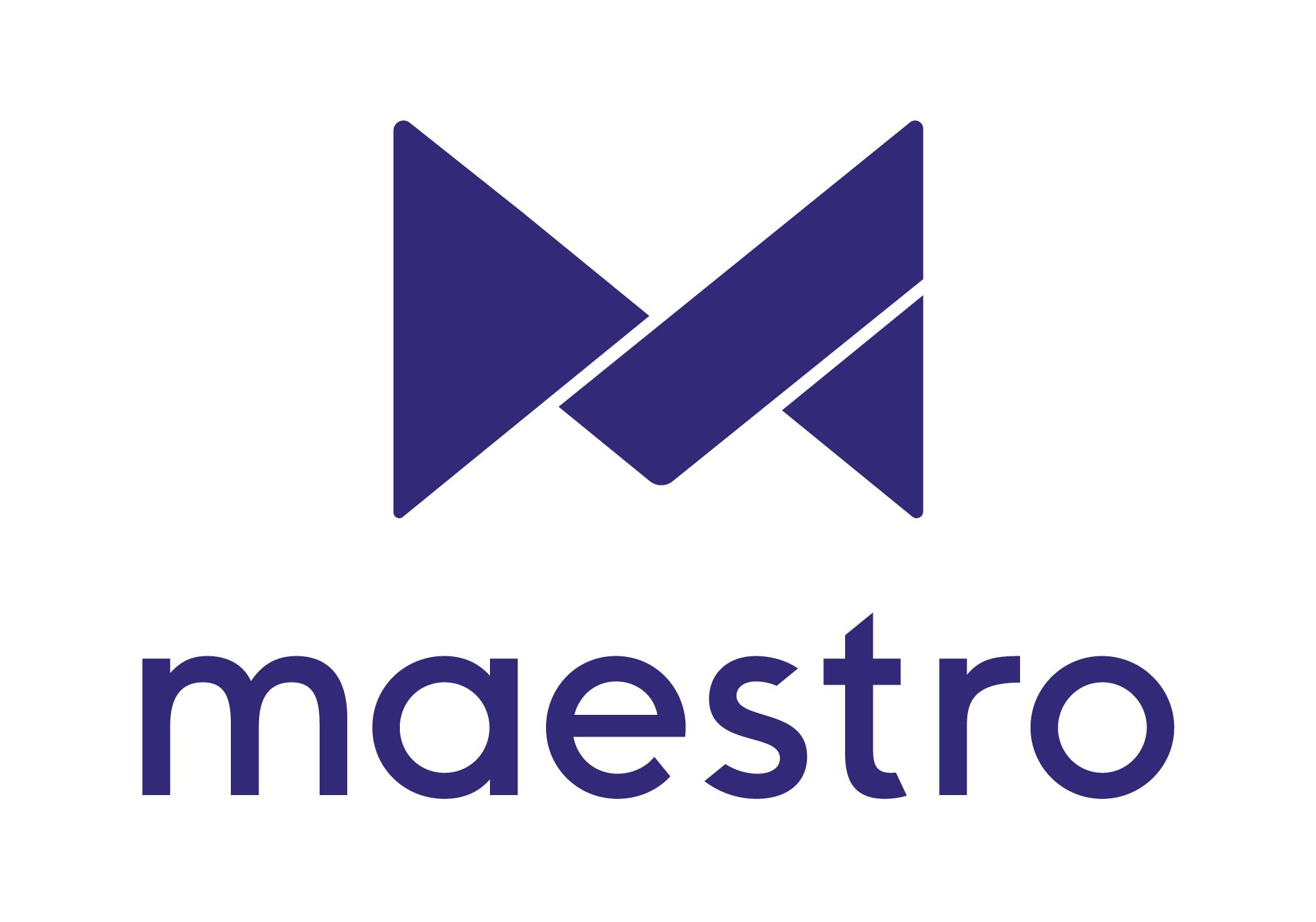Your Guide to Android TV SDK: Developing a Business TV App for Android

There’s no question that over-the-top (OTT) streaming is an essential new distribution channel for enterprises. As we shared in our OTT TV guide, viewers are actively shifting from traditional broadcast television to streaming, so if your brand and video content aren’t there, you’re falling behind.
The obvious solution is to develop your own smart TV app. Of course, getting in front of your target audience starts with knowing where they’re watching content – and one of these is very likely going to be Android TV.
In this guide to Android TV SDK, we’ll explore how to develop a successful branded OTT app for Android TV.
Table of Contents
- What is the Android TV SDK?
- The Benefits of an Android TV App
- How to Create an Android TV App
- Set Up Your Development Environment
- Design the User Interface
- Integrate Content
- Add Interactive Features
- Test and Debug
- Submitting Your App to Google Play Store
- Official SDK vs Platform SDK
- Work with Maestro
What is the Android TV SDK?

The Android TV SDK, or software developers kit, is a collection of tools and resources that support the creation and running of a TV app within the Android ecosystem. While the same fundamentals apply to development for any Android devices, including smartphones and tablets, there are a few unique steps you should take to ensure that your app will run on Android TVs specifically.
For one thing, you must make sure your SDK tools are updated to at least version 24.0.0, and that your SDK is updated with Android 5.0 (API 21) or higher. Then, you’ll need to create an app project in order to access the new APIs for TV devices. Lastly, your app must declare a launcher activity for TV in its manifest, as well as TV device support (for Android TV) and that touchscreen is not required as an input.
Fortunately, these TV-centric development steps are fairly minimal and simple to implement. If you and your team already know how to develop apps for Android, then you’re way ahead of the game when it comes to development for Android TV!
The Benefits of an Android TV App
So, why should your business work with the Android TV SDK? And why even bother creating an app for Android TVs in the first place?
Well, here are a few of the biggest reasons to develop for Android TV:
- Massive growth in Android TV OS. According to the Android Developers blog, Android TV OS has seen significant growth of 47% year-over-year, with active monthly devices of 220 million. If you can get your TV app onto this massive platform, you can tap into a large – and growing – global user base to distribute your video content to.
- Content Recommendations. There’s a lot of power in Android TV’s content recommendation features which get displayed right on the home screen. If you can take advantage of the recommendation engine, you may be able to attract users to your content and increase engagement with your app.
- Custom Branding. With Android TV, you have the unique opportunity to craft a custom branded presence on the home screen of your target audience’s televisions. That means both greater brand awareness and ongoing engagement with your brand.
Plus, the nature of a TV app allows for additional revenue streams, including subscriptions, advertising, and in-app purchases.
How to Create an Android TV App

Android has a massive user base across millions of smart televisions and streaming devices around the world. If you want to create an Android TV app, you’ll have plenty of support from fellow developers and, of course, the official Android TV SDK.
Here are a few steps to follow in developing your business app for Android TVs.
1) Set Up Your Development Environment
The official integrated development environment (IDE) for Android is Android Studio. This will include all of the different things you’ll need to build your Android TV app, including code editors, templates, and emulators.
Similarly, you’ll need the Android TV SDK, which houses the libraries and tools you need for Android TV development. To get started, you can open Android Studio and download the necessary SDK components for Android TV, then set up an emulator via AVD Manager to approximate an Android TV environment.
2) Design the User Interface
One of the things that makes Android TV development different than development for other Android devices is how users interact with TVs. The two biggest points are a 10-foot UI (one that a user could read from a distance), and support for navigation with a D-pad or a remote control.
As part of this step, you’ll need to utilize the leanback library and its components.
3) Integrate Content
Actually getting your video content into your app will require some kind content provider like an online video platform.
You’ll be able to use an API to fetch and stream video content that you’re hosting elsewhere, using a streaming protocol like HLS or DASH.
4) Add Interactive Features
You can take your app to the next level by implementing search functionality in conjunction with Android TV’s global search, along with in-app search.
Additionally, you can take advantage of key Android TV features, such as the Recommendations API, which will suggest content within your app to users on the home screen. This is an important way to draw users in straight from the home screen.
Lastly, be sure you enable voice commands so that users can control your app through Google Assistant. The more interactive features you support, the more users you can appeal to and the more engagement your app can get!
5) Test and Debug
To ensure your app is ready for general availability on Android TV OS, you’ll need to do some testing and debugging. First and foremost, consider user experience – is your app easy to navigate using the kind of device a viewer is likely to use with their television?
Second, you should test on several Android TV devices to make sure the app works the way you expect across a variety of models and brands. This may start with an emulator, but ideally, you’ll want to test on actual Android TV devices to get the most accurate information about performance.
Submitting Your App to Google Play Store

During the development process, you’ll be going through the five steps we mentioned. But before you can officially get your Android smart TV app onto the platform, you’ll need to make sure it qualifies for the Google Play Store.
There are a few specific Android TV design requirements to be aware of:
- It must be designed for usability by viewers at least 10 feet away, with a strong style, layout, and interactive UI components.
- It must have certain functionality across game controllers, advertising, web content, and ambient mode.
- It should be in compliance with Google Play, including policies, App details page, and login credentials.
If your app meets the publishing requirements, it should appear on the Play Store on TV devices immediately. Otherwise, the Play Store team will reach out through your email address to tell you what you need to change.
Just note that your app won’t be available for users until it’s approved, so it’s worth taking the time to go through the requirements and make sure your app meets them all.
Official SDK vs Platform SDK
![]()
Throughout this post, we’ve talked about the official Android TV SDK, which is a set of tools and documentation that comes straight from Android. But if you look for an online video platform (OVP) like Maestro to partner with, you get a way to host and manage all of your VOD and live streaming content in one place.
You should work with an OVP so that you can get access to detailed analytics, interactive options, monetization, and a whole lot more.
Best of all, you can collaborate with your OVP’s team and turn to their platform-specific TV SDK to develop your own branded OTT app across Android and other platforms. In the end, whether you’re looking to white-label an Android TV app or build one from scratch, working with an OVP that has an Android TV SDK will help your business get where it’s trying to go!
Work With Maestro

Maestro is one of the most popular online video platforms for enterprises. Our video hosting suite includes advanced monetization options, in-depth analytics, robust security features, and interactive tools.
Now, we’re pleased to announce that we’ve opened up a whole new opportunity for reaching your customers through the use of OTT TV and smart TV apps. To help you take full advantage of OTT as a distribution channel, Maestro is releasing a new suite of TV SDKs, including Android TV and the Android TV OS platform.
Are you ready to reach your customers over OTT with Maestro? Give your video content a wider reach and a better viewer experience. Contact us now to find out more and get your content out there via OTT!
→ Contact us to get started